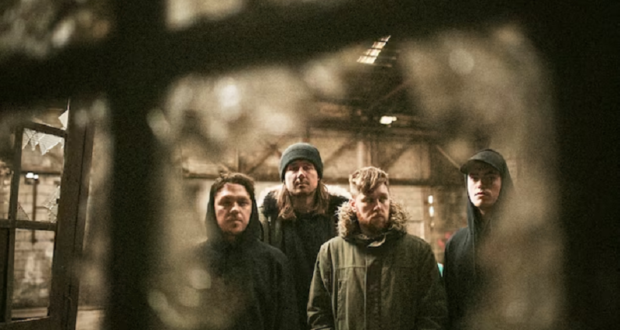The Tragic Story Behind Nikko Jenkins Family and Crimes
Introduction
In 2013, Nikko Jenkins shocked the city of Omaha and the nation when he committed four brutal murders within a month of being released from prison. While Nikko Jenkins alone is responsible for carrying out these horrific crimes, looking deeper into his unstable upbringing and family history provides critical context.
Nikko Jenkins Early Life and Family
Jenkins came from a long line of family members with criminal pasts who failed to provide him adequate structure or intervene in his increasingly disruptive behavior. Diagnosed with a personality disorder, Jenkins also slipped through the cracks of a prison system that did not provide proper rehabilitation or mental health treatment. This article will provide an in-depth look at Nikko Jenkins’ family background, his previous crimes, the four murders he committed, his trial and current death row status. While his actions are inexcusable, the story illustrates how a dysfunctional family environment and lack of institutional support can contribute to creating a violent offender.
Nikko Jenkins’ Chaotic Upbringing Born in 1986, Nikko Jenkins grew up in a volatile household filled with criminal activity and violence. His parents, David Magee and Lori Jenkins had six children together but never married. Both parents had been incarcerated for significant stretches and other family members also had criminal records.
David Magee had been convicted of manslaughter as a teenager. He was absent for much of Jenkins’ childhood, cycling in and out of prison with convictions for robbery, assault, and other offenses. Lori Jenkins also spent time in prison for fraud and had difficulty holding a job or providing stability. With his parents often incarcerated or unavailable, Jenkins lacked consistent supervision or guidance during his formative years.
Jenkins’ siblings
Jenkins’ siblings followed similar paths, getting involved in criminal offenses from an early age. His brother John Magee faced a charge for carrying a concealed weapon at just 12 years old. Another brother, Anthony Jenkins, was incarcerated for manslaughter. Jenkins grew up conditioned to see crime and violence as normal parts of his family’s dynamics.
Jenkins himself first entered the juvenile justice system at age 15 for unauthorized use of a vehicle. By 18, he had dropped out of high school and accumulated five misdemeanor charges along with probation violations. Prosecutors looking back at his childhood point to these early cases as missed opportunities where interventions could have possibly prevented future violent acts.
Jenkins’ Adult Crimes Before
Jenkins demonstrated little interest in pursuing an education, maintaining steady jobs, or changing the criminal thinking patterns deeply ingrained from his youth.
Psychologists who later analyzed Jenkins determined that the combination of his paranoid personality disorder, troubled childhood, and lack of access to mental health resources created the perfect storm for violence. Jenkins reportedly heard voices and experienced hallucinations from a young age. Yet during these frequent incarcerations, he received no meaningful psychiatric treatment or rehabilitative programming aimed at helping him develop coping mechanisms for his illness.
Warning signs of Jenkins’ deteriorating mental state were apparent during his multiple run-ins with law enforcement and the courts. In 2010, he got into an armed altercation with police where he was shot three times after refusing to drop his weapon. The following year, he assaulted a guard while incarcerated. A psychiatrist who examined him warned that Jenkins posed a high risk of future violence, recommending immediate psychiatric hospitalization. But the prison system failed to provide Jenkins long-term inpatient mental health treatment.
The 2013 Omaha Murders
The 2013 Omaha Murders Shortly after Jenkins’ release from prison in July 2013, he committed four brutal murders that shocked and horrified the community of Omaha.
On August 11, Jenkins murdered Juan Uribe-Pena and Jorge Cajiga-Ruiz just days after meeting them. He shot the two men and then hacked their bodies with a machete.
On August 19, he gunned down Curtis Bradford at the Brown Street home where Bradford lived.
Just three days later on August 21, Andrea Kruger was killed in her SUV while driving home from work. Jenkins had approached Kruger’s vehicle randomly and fired multiple shots directly at her before speeding from the scene.
Evaluating Factors Behind Jenkins’ Violent Acts
The senseless selection of innocent victims combined with the execution-style killings led to public outrage.
During police interrogations, Jenkins openly confessed to the murders in chilling detail. He claimed the Egyptian god Anubis commanded him to sacrifice the victims. Though found competent to stand trial, psychiatrists concluded his schizophrenia and ingrained violent tendencies severely impaired his impulse control and morality.
The Trial and Aftermath
The Trial and Sentencing Jenkins stood trial in 2017 where prosecutors sought the death penalty. He pled no contest to all four murders, bypassing the need for a jury trial. Victims’ family members testified about their heartbreak and devastation during the sentencing hearing.
Judge Peter Bataillon ultimately sentenced Jenkins to death on all four convictions. Bataillon said. The judge acknowledged Jenkins’ mental health issues but concluded he understood right from wrong when committing the murders.
Today, Nikko Jenkins remains on death row at Tecumseh State Correctional Institution as his appeals process slowly proceeds. The tragic case prompted scrutiny of Nebraska’s parole procedures, mental health resources in prisons, and violent offender rehabilitation programs. The loss of four innocent lives provided yet another painful chapter in the broken family history of Nikko Jenkins.
Conclusion about Nikko Jenkins Family
Jenkins alone made the depraved choice to take innocent lives. However, the case does highlight alarming flaws in our mental healthcare and criminal justice systems.
A child raised in a chaotic environment filled with criminal influences can often lack the internal moral compass and self-control to navigate life’s challenges and frustrations. Prisons must emphasize rehabilitation programs aimed at helping offenders develop empathy and coping skills.
Perhaps if Jenkins had received intensive psychiatric intervention or access to social services early on, things could have turned out differently. But speculation cannot erase the anguish he has caused. We can only hope to learn from this tragedy and implement policies that proactively address systemic gaps. While nothing can undo the past, increasing support for mental healthcare and offender rehabilitation may prevent future families from enduring the pain caused by Nikko Jenkins.
Additional FAQs:
- Who is Nikko Jenkins and what is his background? Nikko Jenkins, known for his involvement in tragic events in Omaha, Nebraska, 2013, became a subject of public interest due to his criminal activities.
- Why is the Jenkins family portrait significant? The Jenkins family portrait serves as a poignant reminder of the complexities within familial bonds, offering a glimpse into their shared experiences and emotions.
- How does the family portrait reflect their relationship amidst adversity? Despite facing challenges, the Jenkins family portrait exudes warmth and unity, illustrating their resilience and closeness in trying times.
- What does the image reveal about Nikko Jenkins beyond his notoriety? Beyond his infamous reputation, the image portrays Nikko Jenkins as a part of a larger family unit, highlighting his connections and humanity amid controversy.
- Can the Jenkins family’s story offer lessons about compassion and understanding? Exploring the Jenkins family narrative encourages reflection on the complexities of human relationships and the importance of empathy in understanding individual journeys.
Reference Links:
http://www.linkedin.com/pulse/ace-ibm-c1000-056-exam-authentic-dumps-examsprepare-dumps-m7hee/
http://www.linkedin.com/pulse/conquer-palo-alto-networks-pse-strata-exam-reliable-chrae/
http://www.linkedin.com/pulse/unlock-hashicorp-ta-002-p-mastery-official-exam-dumps-yni0e/
http://www.linkedin.com/pulse/elevate-your-salesforce-marketing-cloud-administrator-nybwe/
 Living There
Living There




